#Kathy Hillis
Explore tagged Tumblr posts
Photo
-watched 4/9/2023- 3 stars- on Netflixdvd
Very confusing at times!






“okay, everybody who hates harry here, raise their hand.”
–kiss kiss bang bang (2005), dir. shane black
#my have seen list#Kiss Kiss Bang Bang#2005#film#shane black#mystery/crime/comedy#robert downey jr#val kilmer#michelle monaghan#corbin bernsen#indio falconer downey#bobby tuttle#brian simpson#angela lindvall#dash mihok#rockmond dunbar#duane carnahan#ariel winter#larry miller#shannyn sossamon#ali hillis#evan parke#vincent laresca#harrison young#kathy lamkin#christopher gilman#Netflixdvd
209 notes
·
View notes
Video
tumblr
i absolutely LOVE this woman
#bb20#bb12#bb14#britney haynes#the dr queen has spoken#of all the moments#she picked KATHY IN THE CARAMEL#kathy hillis
54 notes
·
View notes
Text
Coaster -
The Coaster social strategy includes players who often have little effect on the game or attach themselves to a stronger player to get to the end. These players often have little understanding of the game and tend to do very poorly in competitions, unlike Floaters, Coasters typically remain with one alliance throughout the game. Houseguests vary from ability and age. Some coasters win competitions Victoria Rafaeli Atash* won a Veto by some luck in week 4 of BB16 and Meg Maley Holloway** won a Battle of the Block in week 3 and some coasters don’t win competitions for example Derek Frazier and Alyssa Snider. Ironically, Rachel Reilly Villegas*** got the category of Kristen Bitting’s gameplay wrong by calling her a floater and not a coaster.****
*Victoria went by Victoria Rafaeli at the time
**Meg went by Meg Maley at the time
***Rachel went by Rachel Reilly at the time
****Rachel this is what Kristen was in BB12
#big brother dictionary#big brother#**#Jordan Lloyd#Kathy Hillis#Kristen Bitting#Rachel Reilly Villegas#Adam Poch#Jenn Arroyo#Victoria Rafaeli Atash#Meg Maley Holloway#James Huling#Raven Walton#Matthew Clines#Kevin Schlehuber#Sam Bledsoe#Azah Awasum#Derek Frazier#Alyssa Snider
0 notes
Text
Me, accepting my fate, as I come to the True Tea realization that no season of BBUS will ever satisfy me after the wanton GLORY that was BBCan5…

27 notes
·
View notes
Photo

When will Paul stop shouting while having normal conversations
#bb19#paul abrahiam#please stop yelling I can hear you in cam 3 but you're in cam 1#Kathy Hillis#stfu
21 notes
·
View notes
Text
When was the last time they casted a woman who was over 40 years old! We need a Karen, Renny, Kathy archetypes.
I don’t get how there were less people in past seasons but had more diversity
2 notes
·
View notes
Text
Council meetings in the new year -- January 2022
Council meetings in the new year — January 2022
When the Unemployment Insurance Advisory Council last met on 21 October 2021, not much was decided or even reckoned with. Other than the trust fund balance being $963 million and approval of a draft UI bill, LRB 4438 (unchanged from what was introduced in the September 2021 meeting), nothing much was discussed or decided. Council members even decided to cancel their remaining meetings for…

View On WordPress
#Jim Chiolino#job centers#Kathy Thornton-Bias#Mark Reihl#public libraries#Theresa Hillis#Thomas McHugh
0 notes
Text
Maybe you’ve had the same experience, you go looking for a book you are sure someone must have written only to find that no such book exists. No one has written it yet. A few years ago, I wanted to learn more about the interconnections between the early days of punk rock and the poetry scene in New York City in the Seventies. This, in part, grew out of research for a project. I was searching for information to help establish a backstory timeline for the poet-professor parents of the protagonist of my novel-in-progress Gangs With Greek Names. I was also just curious. I wanted to learn more about the era of my high school years, learn more about what was going on in the big city twenty miles west of the Long Island burb where I grew up. I knew Patti Smith, Richard Hell, Tom Verlaine, and Jim Carroll were all involved in the scene centered around the Poetry Project at St. Mark’s Church on the Bowery in their pre-rock ’n’ roll fame days. I wondered how much overlap there was between that scene and the nascent punk scene centered around CBGB. Proto-punks Ed Sanders and Tuli Kupferberg of the Fugs and Lou Reed of the Velvet Underground also had roots in poetry. Surely someone must have explored those connections and written a book about it. I imagined something along the lines of David Hajdu’s Positively 4th Street for the punk generation. Daniel Kane’s “Do You Have a Band?” Poetry and Punk Rock in New York City is the book I was looking for back then. I’m glad someone’s written it. Too late to help with my novel’s backstory timeline (cobbled together instead from other sources) but a pleasure to read just the same. Kane explores the influence New York School poetry had on punk rock and the influence punk rock had on some second-generation New York School poets. Admirably, Kane never strives to clarify distinctions and divisions between one scene or tendency and another to the point of distortion. He helps us see as clearly as possible through the muddy waters without ever pretending they aren’t muddy. So much of any scene is an ongoing act of self-creation among its participants which is weakened once a marketable name is pasted over it. One could argue that punk died the day it was labeled punk. Post-punk was born and lasted until it was labeled “post-punk,” I guess. True sailing is dead! Kane lays out the premise of the book in his introduction after acknowledging the more widely-known influence of the Beats and earlier figures such as Rimbaud on rock and roll:
“Do You Have a Band? Does not deny that there are resonances between the band Television and French symbolism, the rhetoric of punk rock and Situationist International slogans. But what about the work of poets who actually shared New York City’s Lower East Side streets, mimeographed pages, and stages with the pioneering figures of punk? How did downtown writing and poetics of the 1960s and 1970s make their way into rockers’ music and approach to art? Musicians in bands from Ed Sanders and Tuli Kupferberg’s Fugs through the Jim Carroll Band were as influenced by and productively critical of the writers living all around them as they were by and of authors from the distant and not-so-distant past.”
Each chapter focuses on a key figure or figures in the overlapping terrain between proto-punk or punk and the poetry scene – Ed Sanders and the Fugs, Lou Reed, Richard Hell, Patti Smith, John Giorno, Eileen Myles, Dennis Cooper — with cameo appearances from the likes of Kathy Acker, John Ashberry, Ted Berrigan, CBGB owner Hilly Kristal, Lydia Lunch, Robert Mapplethorpe (whose question to Eileen Myles provides the book’s title), Bernadette Mayer, Thurston Moore, Alice Notley, Frank O’Hara, Anne Waldman, Andy Warhol and many others. The afterward focuses on what may be the most direct link between (second generation) New York School poetry and punk rock, Jim Carroll’s classic anthem “People Who Died,” inspired by his friend Ted Berrigan’s poem of the same name. There are quite a lot of funny moments illustrating the interpersonal tensions and aggravations present on any creative scene. Andy Warhol asks John Giorno, “oh, John, why does it have to be so boring,” at a poetry reading by Frank O’Hara and others in a crowded gallery. There was no microphone and half the audience couldn’t hear a word of it. Eileen Myles tells about a chaotic poetry reading she and friends gave in a laundromat. Richard Hell confesses the shameful truth – he was a Dylan Thomas fan – and then goes on to compare Thomas’ poetry to a Led Zeppelin arena show. Me, I love Dylan Thomas, unapologetically. But then I wish I’d gotten the chance to see a Led Zeppelin arena show too, so… Anyhow, I don’t have to choose between him and Frank O’Hara and neither do you, dear reader. I don’t care what anybody says. Resist the false binary wherever you find it. It was interesting to get a better sense of the dynamic between another Dylan Thomas fan, Patti Smith, and poet Anne Waldman, who was at the center of the St. Marks scene at the time. I’d wondered about that occasionally, if they got along, how they got along. That seemed like ripe territory for a diva battle of epic proportions, so it was interesting to read about Smith’s letter to Waldman describing what she liked and did not like about the Poetry Project. In a sense, Do You Have a Band? may be seen as the third volume in a trilogy following Kane’s previous informative books All Poets Welcome: The Lower East Side Poetry Scene in the 1960s and What Is Poetry: Conversations With the American Avante-Garde. Recommended reading for anyone interested in learning more about the various interconnections between poets, musicians, and artists in New York in the sixties and seventies.
https://bookshop.org/a/8227/9780231162975
https://bookfreak.us/2018/04/05/punk-poets-and-poet-punks-a-review-of-daniel-kanes-do-you-have-a-band/
#do you have a band? poetry and punk rock in new york city#daniel kane#poetry#punk rock#1970s#new york city#nyc#eileen myles#patti smith#tom verlaine#jim carroll#jim carroll band#richard hell#tuli kupferberg#ed sanders#john giorno#patti smith band#television#ted berrigan#alice notley#richard hell and the voidoids#dennis cooper#anne waldman
28 notes
·
View notes
Text
Big brother can’t have an all star season without THE all star Kathy Hillis.
13 notes
·
View notes
Text
Nicole WISHES she was Kathy Hillis
5 notes
·
View notes
Text
Childhood fear
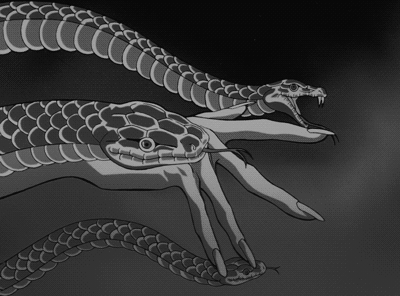
When I was four years old, I began to draw snakes in my drawing khata.
A traditional “drawing khata” is a thing of childish beauty. Sometimes it is the size of your laptop in length and breadth, sometimes it can be a bit longer, depends on the child really. Oh, sorry about that, depends on the school that the child goes to. There are usually photos of national monuments on top, and there is a little portion near the bottom where one can write their name, roll no., section and subject. This is obviously a copy for the art class, yet there is the “subject” written on top. Funny. Inside, the pages are made of cartridge paper, which is sometimes known as art/chart paper. The surface is smooth on one side, a little textured on the other. No matter how tempted you are to draw on the smooth side, thinking that your pencils and crayons would glide on smoothly, you really need to draw on the textured side. Especially if you’re a watercolour type of person. The colour bleeds into the textured surface better, and does not spread. I didn’t know all these things at the time, of course. I would open the copy and draw on whichever side, sometimes on both sides to prevent wastage. My mother says, “Opochoykari shoytaaner bondhu”. I heard the “shoytaner bhai” version much later on in life.
Four year old Mustu was homeschooled back then, an arrangement that was to last for just one year. After that, hopefully, Papa will have a better posting. Mustu will have a school to go to, hopefully, after her father’s duties ended at the Chittagong Hill Tracts. Alikadam was a pristine cantonment where all the military personnel lived in thatched huts. Only the C.O lived in a tin shed house with his wife and his two little bullies—Hridi and Odri. I liked our house better, of course. We had a proper garden at the front, a swing, a walkway with flower beds around it. I learnt the name of many flowers, and here is a song that my mother taught me—
Tomar neel dopati chokh
Ar shet dopati hashi
Khopa ti te laal dopati
Dekhte bhalobashi
Dopati is a flower. So is morog phool. I realized much later on in life that not many are interested in flowers, so I lost interest in them too.
We had a lovely backyard too, and we could plant vegetables round the year. I remember arriving there in a little blue coat, with my silky hair “mushroom cut” before the move happened, my form lean and my cheeks chubby. My lips were still very thin. When we arrived, I went to explore the backyard in the afternoon after the initial unpacking was done. Dadu held my hand as I trotted in front of her. I discovered the hens during this trip—pitch black feathers with a red “jhuti” each, as much as the nature would allow a female chicken. I burst into a rhyme immediately—
“Higgledy piggledy, my black hen,
She lays eggs for gentlemen,
Gentlemen come every day
To count what my black hen doth lay”
Dadu was absolutely delighted. Higgledy and Piggledy. My two black hens. One name, yet conveniently separated into two. You pronounce them as “Hig-ly” and “Pig-ly”. We also met the cauliflower, the cabbage and the carrots growing in the garden patch. Memories left by the “previous” 2IC uncle and his family, memories that were to become food for the new 2IC and his family, the then Major Qazi Abidus Samad. My old man didn’t have his beard back then. He was clean shaven and kinda cute, he still is kinda cute. He just smiles and nods, has never hit me or scolded me. He’s the easier parent.
One day while I was peeing, Papa was standing outside, because I was only just learning how to clean myself. In the bamboo weave of the walls, I saw something white slithering away slowly, taking its time and checking things out on its way. I looked at it for some time, still used to fear from only one source. “Papa, wall er upor diye ki jeno chole jacche, eke beke!”
The army man understood. He hurried in, brought me down from the commode and told me not to be scared. I pulled my shorts up, and fixed my frock and wore my sandals. Some men came in with a couple of “lathis”. The little snake was taken care of.
This little snake became something of a martyr to me.
I learnt that carbolic acid had some special properties, it helped ward off snakes. We snake proofed our house in the following weeks by putting bottles of carbolic acid in different corners of the house, and made sure that at least one remained in each bathroom. I was not stupid, nobody had to forbid me to touch it or sniff it or drink it or play with it. I eyed the bottles every time I went to pee at the different bathrooms, and that was that. The bottles became a part of our lives, there but not there.
I like to think that Alikadam was my starting point. Let me try and explain this feeling, or why I feel that way so strongly. Before Alikadam, I was a mere toddler. Even though my mother and khalamoni keep telling me stories from when I was little, I don’t remember being that child. I don’t remember living in Dhaka, nor do I remember what Dhaka looked like. Some of my earliest memories is of the white Toyota Papa used to drive, and that too, being driven up the twists and turns of the hilly Hill Tracts, straight to Alikadam. I get flashes of earlier memories sometimes, me reciting difficult poems (“Kukur ashiya emon kamor dilo pothiker paye/ Kamorer chote bish daat fute bish lege gelo taay”), me playing a game of tag-you’re-it that I named “Abiyala” and running after our domestic help, me staring at the TV while the azaan aired just before iftar. These memories are merely fragments, but from Alikadam, my memories somewhat solidified. I remember the colour of the cow that I first saw being sacrificed, I remember the colour of my coats and my frocks, I remember which tree I used to sit under and read to myself, I remember Dadu’s voice, her sarees, her face when I annoyed her a little too much.
I vividly remember the cat who pawed at a cake that Ammu was excited about baking. She usually makes a weird face while baking or cooking, her heart is never in it. But back then she was really into baking. I remember hearing a little “bump” and a “maw”, and then running to the dining room. Ammu had just gotten out of the shower, she had heard it too. We both saw it. A tuxedo cat, black and white, was meticulously drawing patterns on the golden, square cake still sitting in its pan. Some patterns went horizontally, some vertically, some obliquely. The cat wasn’t eating any of it even by mistake. Ammu drove it away, of course, and threw the cake away somewhere that no human being could find it. “Listen,” she explained to me, “If somebody else finds it and eats it, they’re going to have an upset stomach, so we throw this away.” Actually, she never explained anything. She never explains anything. I just made that explanation up.
My mother doesn’t talk about the important things.
I’ve been afraid of my mother for as long as I can remember. Perhaps my earliest memory is of her carrying a “bhajir kathi” also known as a khunti, also known as a spatula, only made of iron and quite painful if one falls upon your back. My earliest memory of her is her terrorizing me with one of those scalding hot bhajir kathis, she just standing there and implying that she would beat me up. I was a baby, crying was my second nature, as it is for every other baby in the world. She would carry that spatula and display it before me as a deterrent. Fear made sure that I immediately stopped crying, not words of comfort.
I liked to fill my drawing khata with snakes for another reason.
That summer, there was a kalboishakhi jhor at least ten times more violent than what Dhaka experiences. Some of our lighter furniture was gone with the wind, one of our bigger trees in the backyard fell flat on its face. When the weather calmed down, my mother had the bright idea of picking the mangoes that the storm had brought to the ground. Dadu sat herself down on a chair at the front porch, I ran around in the bare verandah, and Ammu took a bucket with her on her mango-mission.
We suddenly heard some unintelligible mumbling from under the mango tree.
“Joleeeeeeel….Joleeeeeeel” “Ammu ki bolo?”
“Joleeeeel….Joleeeeeel”
Her voice was muffled, which is so unlike her. My mother was always shouting at anyone and anything, so I was clearly baffled at her changed behaviour. I did understand though, that she was calling one of our trustworthy Mess Waiters, Joleel bhai. He was a jolly, ever-smiling guy who never said a word extra to any children in the absence of their parents. He was just as pleasant as necessary, and I loved that about him.
And then we saw it.
A fat, patterned snake was slithering under some long, curly mango leaves on the ground. I fell in love with the pattern instantly—a glossy black stripe followed by a stripe as yellow as the insides of a kathgolap. It wasn’t moving towards Ammu at all, it was minding its own business, slithering away. I didn’t see its eyes, but could figure out where the head and the tail was. The snake, slick with rain, was just busy rummaging under the leaves for any mice or mole, perhaps.
Ammu finally found some strength in her voice. “JOLEEEEEELLLLLLLLLLLL”
The Mess was nearby, so this time, there was a, “Jee khalamma!” as a reply. Joleel bhai had heard it, and probably had sensed it too. He brought a few other men with him. With sticks, of course.
The snake was a Shonkhochur. Their kind move around in pairs. So the one that died that night, under the mango tree, would have a mate lurking somewhere, ready to strike. We met the black and yellow mate too, but not before it was time to leave.
I became fascinated by the only thing that my mother was scared of, the Shongkhochur snake. I opened my drawing book one day and took some colour pencils in hand. With the pencil for writing I brought the snake’s silhouette alive in my copy, complete with the inflated head, the “fona”. I then proceeded to draw stripes. Then I was finally ready to colour it in. One black, one yellow, one black and one yellow. I realized that I had drawn a tongue too, a divided one, the type I had only seen on TV. I decided to use red for the tongue, after the colour of my own.
I tore the drawing out of the copy, and brought myself some scotch tape. I stuck four corners of it to the paper to the wall with four pieces of tape. Finally something that my mother was scared of. Finally something to make her stop when she’s blind with rage, and charging at me in full speed to hit me or taunt me.
Finally something to ward off evil.
A Shongkhochur, by the way, is a King Cobra.
2 notes
·
View notes
Text
holly taking her sweet ass time with all these questions...kathy hillis tease
26 notes
·
View notes
Note
if you were to be a melaninated lady from any bb season who would you be and why?
queen kathy hillis of course
1 note
·
View note
Photo
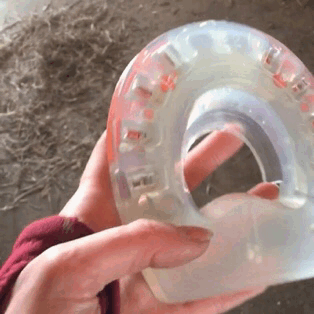
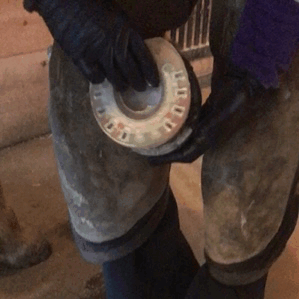
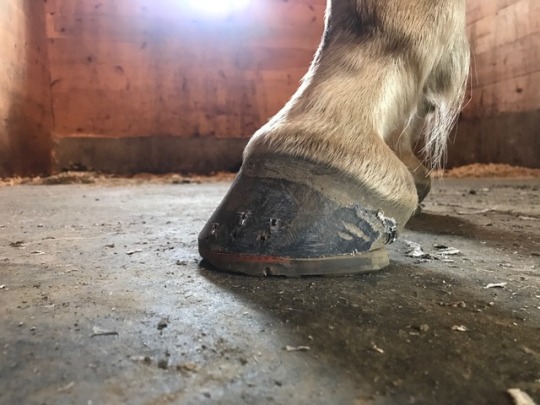

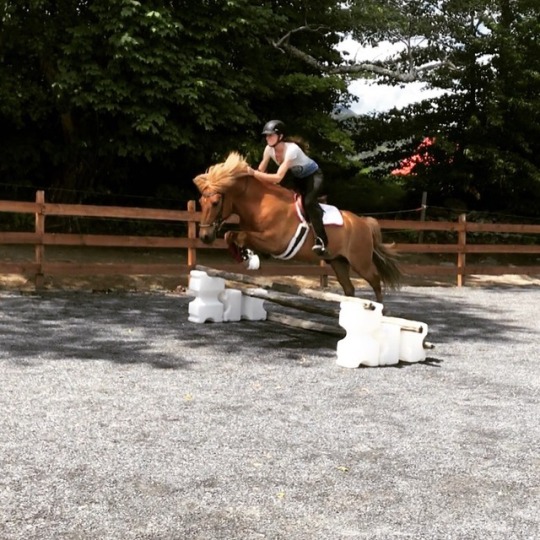
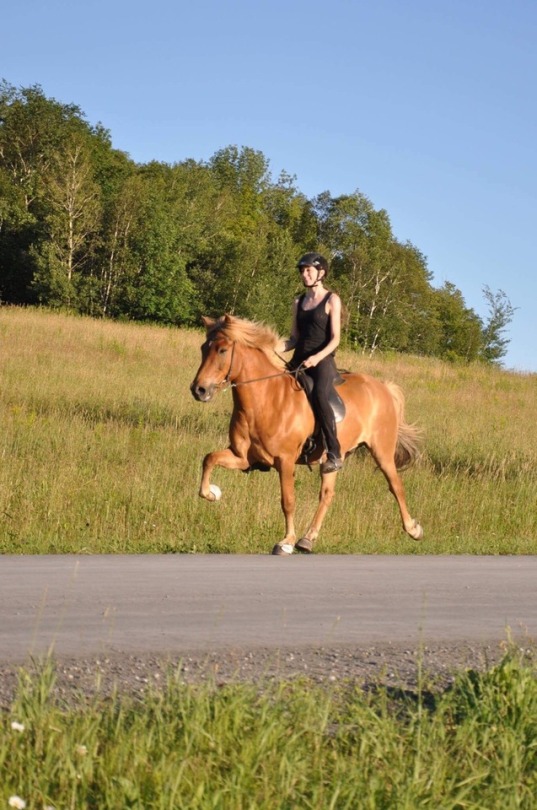
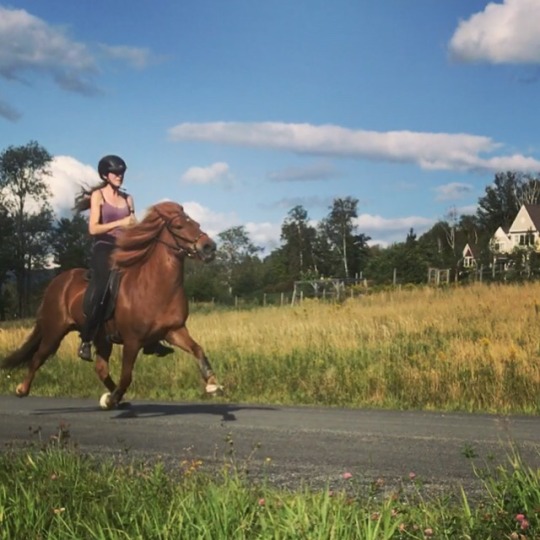
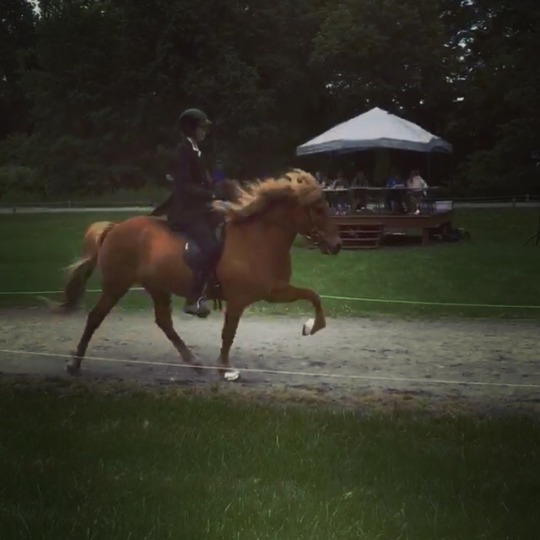

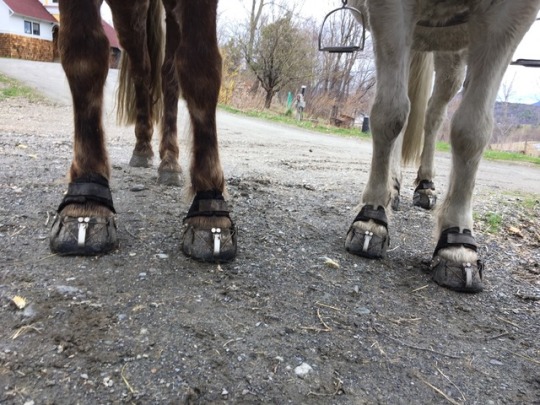
Note: click through the photos and gifs above to read the captions.
I’ve been promising for ages now that I’d make a post about the hoofcare changes we’ve made to our program in 2017, and now that the days are getting shorter I’ve had a bit more downtime to actually do it! So here goes - it is long and I struggled with how to organize it, hopefully those of you who were interested don’t mind wading through all of this information :P
Over the past year I have transitioned every horse in my care out of metal shoes. This was a decision that we made based on research demonstrating that the conclusiveness of metal shoes is harmful to equine joints in the longterm.
Since making the switch, I have noticed a drastic positive change in my horses. Some of the back tightness and stiffness in some of the horses, which I had long accommodated to saddle fit issues and had been working with a saddle fitter to fix, suddenly cleared up - every single horse’s back improved this year, with softer and better developed muscles - the good ones got better, and the ones with some issues got significantly better. I believe that chiropractic/bodywork care is not an “extra” cost but a necessary part of maintaining equine athletes, as this is the only domesticated animal that we SIT ON and expect to perform, so I continue to have my vet check my horses regularly and work with me to determine each horse’s training program. However, since making the switch out of metal shoes, my vet hasn’t had as much to adjust when he checks the horses. This is the most marked change, and it’s not one that I expected. It’s been dramatic enough that I am completely sold on going metal-free.
Another change that I have noticed is improved balance and posture (this, of course, ties into the back softness) in a way that has improved clarity of gait. There is often this idea that horses which are pacey will be better with longer hooves and heavier shoes - this belief is the reason why we have so many shoeing regulations in our sport, to prevent people from cheating or compromising equine welfare to achieve higher scores. However, paceyness and trottiness are both body issues - exaggerating hoof angles or shoe weight does not fix the root of the problem. Fixing the balance of the hoof, rolling back the toe, and making the horse more comfortable through their backs and muscles has trickled down into the gaits - now, on shorter toes and composite shoes or hoof boots (which are LIGHTER than the metal shoes that most of us use in this sport), horses that had a tendency towards paceyness and trottiness have become much more supple and balanced. Now, of course, this is along with a careful foundational dressage program and fitness program, so I’m not saying that you can throw composite shoes on your horse and all of his training issues and chronic back issues will magically be fixed - but for a horses already in a solid, compassionate program, this change has given them a serious boost.
Finally, I’ve noticed that the horses seem a little more confident and cheerful working out of metal shoes, although they were already confident and cheerful - again, it’s like the change has given them a boost. They’ve got more cushion when their hoof hits the ground, and it’s something they reacted to immediately in a positive way. The first time I rode each horse in the composite shoes or hoof boots, I was amazed by how different the horses felt - in a good way! It’s a bit like riding on air, and it’s a more secure feeling because the hooves don’t slide when they hit the ground.
So, now that I’ve opened with the benefits I’ve seen in my horses since making this change, I’ll get into the details of what I’m using, why I’m using it, etc.
First, some background information:
Last year, myself, Amy Goddard, and Kathy Sierra submitted a proposal to the USIHC Board (before I was elected to the BOD) requesting that composite shoes and hoof boots be allowed in sport competition. We made this proposal in response to new (and even some older) research that demonstrates that non-metal hoof protection reduced concussion on our horses’ joints, and improves their chances at soundness and good longevity. I had kept my horses in metal shoes for many years and had not suffered serious ill effects from it as some have (no early onset arthritis, tendon issues, hoof ailments, etc.), I think because of my focus on conditioning and strong foundational dressage work - however, I made a promise to myself and my horses that I will always be open-minded to new findings, and that I will change my ways when I see that something else may be better for my animals’ welfare. The proposal was sent on to FEIF, the international governing body for Icelandic sport, where it was approved on an experimental period for the 2017 show season. Almost immediately, I sought out to find a farrier that could help me transition my horses over to nonmetal hoof protection.
My search led me to Common Ground Hoofcare. Annie and Jeremiah are EXTREMELY qualified professionals who are 100% focused on equine welfare. They’ve dedicated themselves to a never-ending quest to further their knowledge and improve their craft, and as a result they are very open-minded and educated. Their approach produces sound, comfortable athletes and their methods are backed up by the best and most current research we have available. As new information becomes available, they adapt their practices to include it. These are the kind of equestrian professionals that I like to work with.
Best of all, THEY TRAVEL! They can probably come to you! They travel around the Midwest, Kentucky, etc. to offer their services and are willing to expand their territory, although they prefer to stick mainly to the East Coast. They’re also able to recommend other trimmers and farriers that they respect, if they can’t cover your area. I repeat, THEY CAN COME TO YOU, OR HELP YOU FIND SOMEONE WHO CAN.
The shoes approved by FEIF included the Duplo composite shoe, and the Easyboot glove and Easyboot Epic. I chose to shoe my competition horses (and one of my boarders also chose to shoe her horse) in Duplos, straight-nailed on as opposed to glue although glueing them on is also an option (nails were my personal choice in this case). For my other horses - our lesson horses and horses in training - we decided to leave the horses barefoot and work them in the Easyboot Epics. Since then, I have experimented with glueing on the Duplos, and with Epona Shoes. Below I’ll write about my experiences with composite shoes and hoof boots, broken down into the questions that people have most frequently been asking me:
Duplo Composite Shoes
The Duplo shoes are a composite shoe, made of a kind of bouncy, plastic-y material with a metal core. As I said above, they can be glued or straight-nailed on, or a combination of glue and nails. They come in a variety that has side-clips, and a variety that does not. We have been using the variety that does not have side clips.
The Duplo shoes have been absolutely fantastic for the kind of riding I do with my Icelandic competition horses. I cross-train with distance riding, and my competition horses do a 15 mile ride once per week mainly on tough, hilly, hard-packed dirt roads. Additionally, we usually do 1-2 days per week of dressage work in the arena, one day of work per week without a rider (longeing/in-hand or ponying on the roads and trails), but the bulk of our training is conducted on the dirt roads. I put serious miles on my horses, but take the time to condition them carefully and work them correctly using a strong foundation of classical dressage. The Duplo shoes have been an improvement over metal shoes in every single way, for every facet of what I do with my horses. Below are some of the things I have been asked about:
Resets - How do they hold up when you’re riding at speed on those abrasive roads the way we Icelandic riders so often like to do? I’ll put it this way - I think I can count on one hand the amount of time my Vigri and I have gotten a reset out of a pair of metal shoes. We ride a LOT and usually our metal shoes are useless after one 4-5 week cycle. We have been getting at least one and sometimes TWO resets out of the Duplos. TWO! Because they don’t slide when they make contact with the ground the way metal shoes do, they hold up unbelievably well, even with very tough riding.
Are they slippery on grass? NO! Much less slippery than metal shoes! Vigri and Spönn were both shod in Duplos when they won blue ribbons at a hunter pace this summer at GMHA, and that hunter pace was mostly on grass footing. If anything, they’re grippier than metal shoes!
Gaits - Do the Duplo shoes negatively impact the gaits (tölt and pace)? Not for me - however because I am focused on postural rehabilitation and dressage, I do not use hoof length or shoeing tricks to enhance or patch up holes in my horse’s gaits. So I was not concerned that the shoes would mess up their gaits. With good dressage and a proper trim, this shouldn’t be an issue at all, regardless of whether horses are barefoot, in hoof boots, shod in composites, or shod in metal. Gaits should come from the body, not the feet. See above, photos of Spönn pacing in her Duplos and Vigri competing in his.
Heelboots - can they be used with these shoes? Yes they can! There is a part of the shoe that covers the frog, however because the shoe is flexible it is easy to get the little triangle of the heelboot into that space if you want to use heelboots for protection.
Trim cycles - is there any difference with the Duplos? Yes, in that the Duplo shoe is going to maintain its shape and not warp with the hoof the way a metal shoe will, this does mean that horses ought to be kept to a 4 week cycle. Which is really the ideal schedule for a shod horse anyway - going longer results in excessive hoof length that can put strain on the tendons, ligaments, and joints.
Can they be studded for winter use? YES, and Duplo even makes a studded variety! I can’t wait to try them out this winter!!
What about Epona shoes? I like Epona shoes fine, but not for a humid climate. The Duplos have these bumpy, grippy patches that keep them from sliding around on the hoof. I have tried Epona shoes on a horse here and because of the way the hoof was expanding and contracting in the humidity, and the slippery material of the shoe, the shoe ended up moving around too much and breaking up the nail holes. I also did find the Epona shoes to be slippery on grass and on the dirt roads. In my opinion based on my experience, the Duplo is the better choice for our climate here in the Northeast and for our terrain in the mountains of Vermont, and for the level/amount of riding I do.
Benefits - have you noticed any benefits in the 6+ months you have been using these shoes? YES, I absolutely have. I have been able to cut my chiropractic/bodywork bills for my horses in half. Their muscles, backs, and joints are just happier! I’m getting better relaxation and freedom in my horse’s movements. At the recent competition in Kentucky (where I did have to reshoe my horses in metal just before the show because FEIF’s experimental allowance period ended in September), Dr. Gloria Verrecchio said that my Vigri was in the best shape she’d ever felt him in. She has been giving him bodywork tuneups after the long trailer ride to Kentucky for three years now, and this year he was much softer and better developed - I attribute some of that to the Duplo shoes, as they’ve reduced concussion and stress on his joints and allowed him to relax and develop his muscles better. I’m getting improved movement from all of my horses, who seem more comfortable and more willing to offer me a little something extra. Spönn paces better in her Duplos than she does in metal shoes. Overall I am highly impressed with the Duplo shoes, and the way they make my horses feel. I hope that they get approved longterm by FEIF so that I never have to compete in metal again!
EasyBoot Epics
I resisted hoof boots for a long time because I thought they looked clunky, I worried they would fall off or mess up my horse’s gaits, etc. The EasyBoot Epics have dispelled all of my concerns. They are fabulous. They are essentially the same thing as the EasyBoot Glove, except that they use a cable to close whereas on the Glove, you hammer them on or sometimes people even glue them on. I like the EasyBoot Epics because they allow my horses to live barefoot when they aren’t working, which is the healthiest thing for a horse with healthy hooves. Living bare allows the hoof to expand and contract as it should, and allows us to keep the horse in a very balanced trim without having to attach something to the bottom of the hoof. The Epics fit snuggly - before I ride I clean out my horse’s hooves, and slip the Epics over their hooves. Sometimes, they do need a knock with a mallet because you do want them to fit snuggly. Then you just velcro the gator and snap down the cable, and you’re good to go. Here are some of the questions I’ve received about the Easyboot Epics:
Do they change the horse’s gaits/way of going? This was my biggest concern. And the answer is yes - in every single one of my horses, they have improved their gaits. I think this is because they make the horse more comfortable and confident than they are in metal shoes. Horses with a tendency to get a bit pacey or trotty both began to offer clearer tölt. Again with these boots, the horse’s just aren’t needing the chiropractic or bodywork they once needed.
Can you use them only in front? Yes you can, but that may change the balance of your horse, because then their front feet will weigh more. For Icelandic competition, you must have them on both the fronts and backs if you are using them.
Do they stay on? If they fit, yes - but there is a small catch. Your horse’s boot size may change throughout a trim cycle! That took me a little while to figure out. Particularly on the front hooves, after a fresh trim my horses are often a size smaller than they are towards the end of the cycle. So if your horse measures a 0 after a trim, you might want to buy a set of 1s as well to use towards the end of the cycle. I have had boots come off when they were fitted to my horses at the end of a cycle, and I put them on after a fresh trim. Also, if the boots get very wet, they’re more likely to come off when you’re going fast in canter or fast tempo tölt or pace, if they are even a little bit too big. But as long as they are the correct size, you will not have problems.
How long do they last? My farriers told me that if I’m riding regularly, to expect about 3 months from each boot. So far that has been pretty spot on, except for horses in lighter training. Eventually, just like shoes, they do wear out.
Does the gator rub the pasterns? Not on any one of my horses and we have done a fair amount of distance riding using these, through water crossings and mud etc. with no issues.
Are they hard to put on? They can be hard to put on in the beginning when they are brand new. But they quickly get easier to put on. There is also a learning curve, in the beginning its a bit awkward, but now I can put them on all of my horses very quickly, in about 2 minutes to get them on all 4 hooves.
Do the horses like them? They seem to. We only had one horse walk a bit funny when they were first put on, but she quickly adjusted. None of the horses have acted displeased with the boots and all have improved in them so I would say that the horses do like them.
If anyone has any further questions about my experiences with composite shoes or hoof boots in this past year, feel free to ask! It is my hope that these shoes will get approved by FEIF to be permanently included as acceptable shoeing for Icelandic sport, but even if they don’t get approved, I can say without a doubt that my horses will be wearing composites or hoof boots from now on. If I must put metal on them for shows, I will do what I did for the KY show and shoe them in metal just before the show and pull shoes immediately after, but I hope that FEIF will see that there is no reason to ban composite shoes and hoof boots from competition, and that allowing them is a great step for equine welfare.
EDIT, November 18, 2017:
We have now studded both the Easyboot Epics and the Duplo shoes for winter use, and I have ridden in both in all gaits including canter on the icy roads and in the snowy ring. I am very pleased with how both are working, although I am finding the Duplos slightly more stable. I would say based on my observations so far that having the Easyboot Epics fit PERFECTLY becomes especially important when using them in winter like this, because as the boot bites into the ground, if its moving around at all on the hoof that will surely be an issue. Ours are fitted well and have been working out nicely. Below are two photos of a studded Duplo shoe (attached to the hoof with both glue and nails - fewer nails than would be used without glue), and one photo of a studded Easyboot Epic.

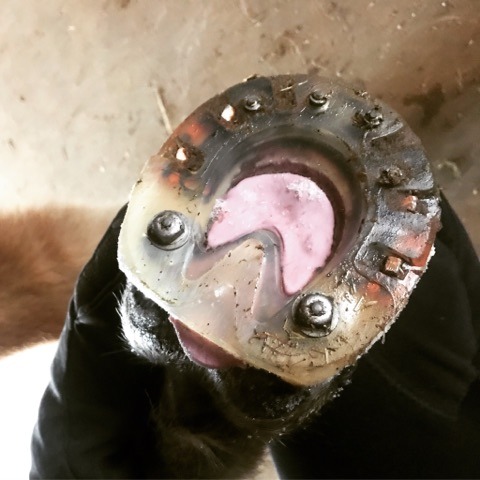
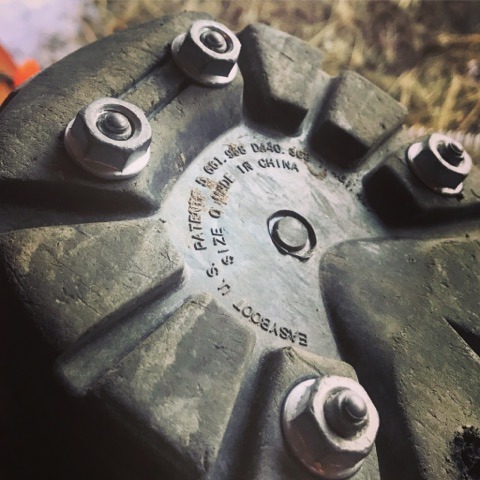
I am thrilled that I will be able to use these all winter long!!
285 notes
·
View notes
Text
A pool of honey? What kind of Kathy Hillis teas

14 notes
·
View notes